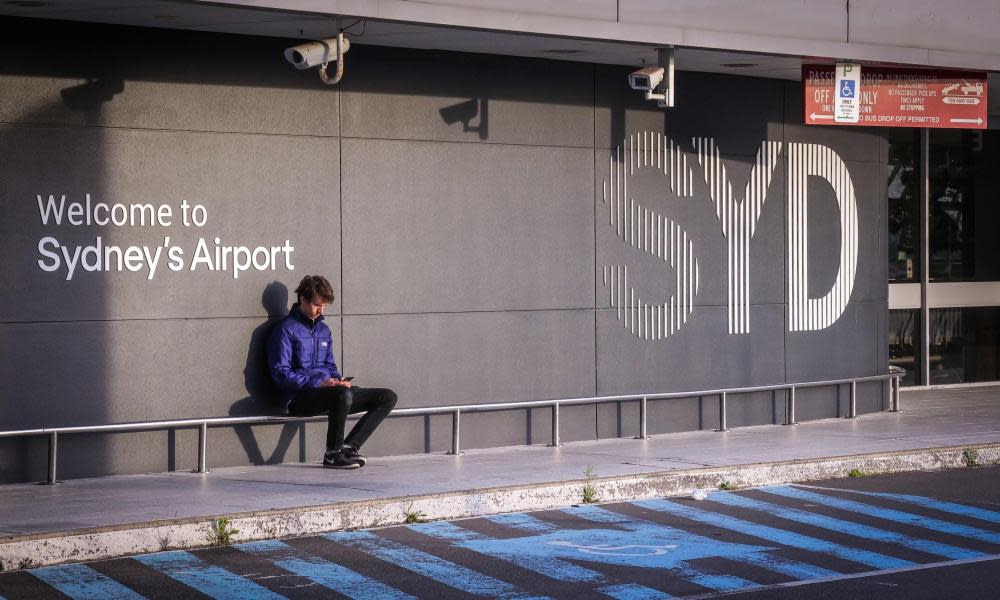Australia's refugee intake falls 30% below target as pandemic takes toll

The home affairs department has reported a significant reduction in the number of visas being granted – including refugee visas, which have been reduced by almost a third – in large part due to the pandemic.
Despite the drop in visa numbers, the department still raised $2.2bn in revenue through applications.
Of the 13,171 humanitarian places the department reported as delivered, 11,521 were given to refugees outside of Australia who had been assessed as needing protection. The government has set a target of 18,750 places, meaning home affairs failed to meet its metric, delivering almost 30% less places than the year before.
Three-quarters of the humanitarian offshore visas were delivered to those in Africa, Asia, the Americas and the Middle East, while “vulnerable” people (women, children, LGBTIQ people) made up 21%.
Just under 45% of those granted humanitarian visas have been settled in regions outside of Sydney, Melbourne and greater Brisbane, as part of the government’s plan to settle refugees and migrants away from Australia’s major centres.
“The humanitarian program was not fully delivered in 2019–20 due to the temporary suspension of granting of all offshore humanitarian visas in March 2020 as a result of Covid-19 travel restrictions,” the department said in its latest annual report.
“This followed the announcement by the United Nations high commissioner for refugees and the International Organization for Migration of a suspension of resettlement travel on 16 March 2020 due to Covid-19.”
It wasn’t just humanitarian visas which were down. Overall, the department recorded an almost 25% decrease in visa lodgements after Australia closed its international borders. Visa cancellations due to the public health orders were not included as part of the home affairs remit.
“The administration of Australia’s migration program was significantly impacted by Covid-19 and associated travel restrictions,” the department reported.
“The department delivered 140,366 permanent placements, down from 160,323 in 2018–19. Although the number of temporary and permanent visa applications reduced by 2.3 million in comparison to 2018–19, the department continued to contribute to Australia’s economic prosperity through granting 6.5 million temporary visas, compared to 8.8 million granted in 2018–19.
“The department maintained its focus on the integrity of the migration program with 325,637 temporary and permanent (non-humanitarian) visas refused, a decrease of 13.7% on 2018–19.”
How visas are granted in Australia has come under renewed scrutiny after former New South Wales MP Daryl Maguire was linked to a “cash for visa” scheme which has formed part of the investigations by Icac, the NSW corruption watchdog.
Related: Australia’s home affairs secretary says state security must be 'ubiquitous without being oppressive'
Home affairs is one of the first departments to be questioned in budget estimates this week. The visa scheme will be one of the issues canvassed by non-government senators during the hearing on Monday, with clarification wanted over the state and federal ties.
Australians stranded overseas will also form part of the hearing. Close to 30,000 have registered to come home. Last week the federal government announced another 5,000 or so Australians could be catered for between now and March with the inclusion of the Northern Territory’s Howard Springs centre in the quarantine program, but critics point out that won’t do much to increase the numbers of Australians being brought home or stem the flow of those being added to the list.
Meanwhile, home affairs also reported almost 2,200 calls were made to its national security hotline in relation to foreign interference concerns. Departmental officials pointed to an increased awareness due to the government’s new focus on the issue, with universities one of the key stakeholders asking for clarification.
“Call rates are likely to increase further throughout 2020–21 as awareness of the program continues to expand,” a spokesperson said.

 Yahoo News
Yahoo News 
